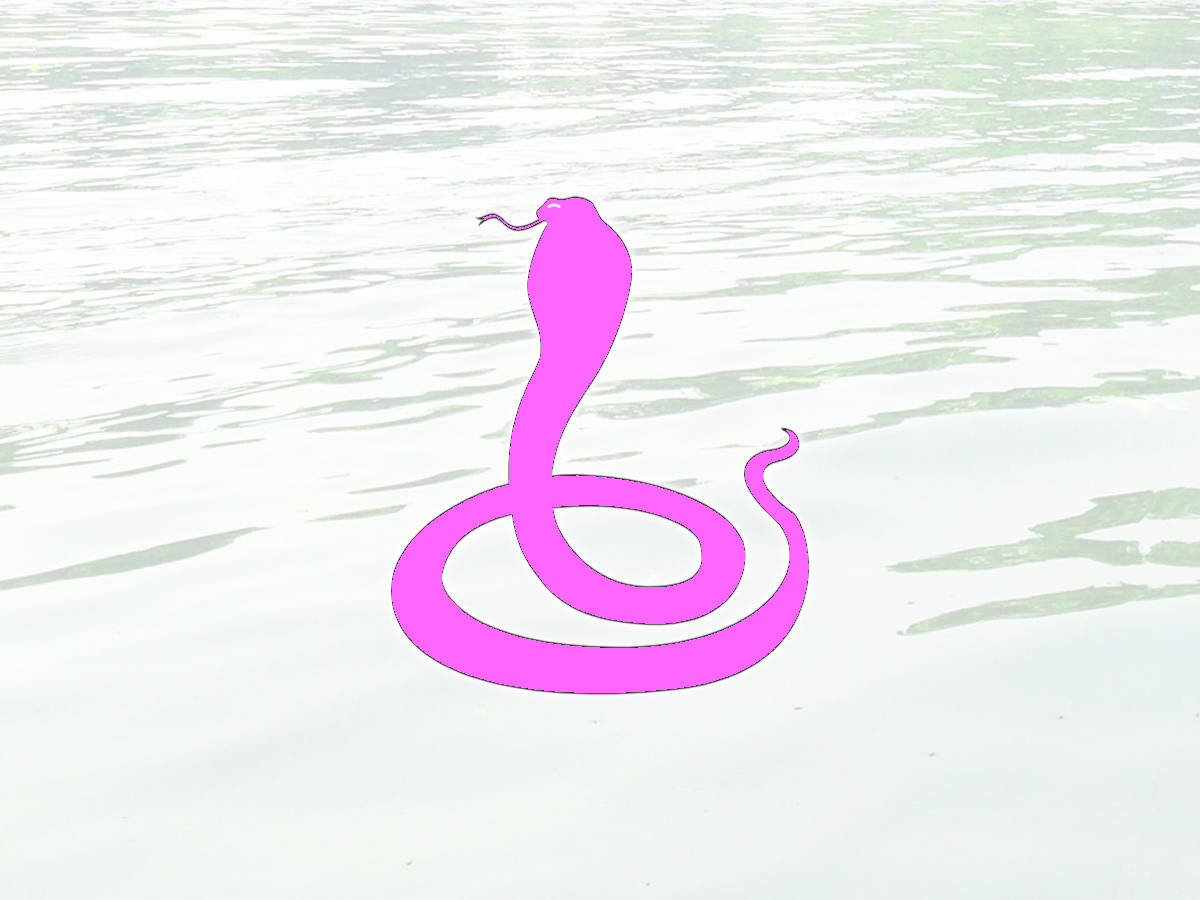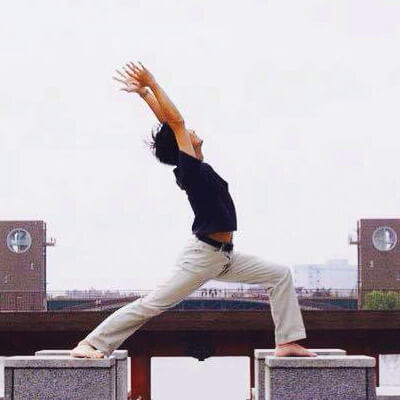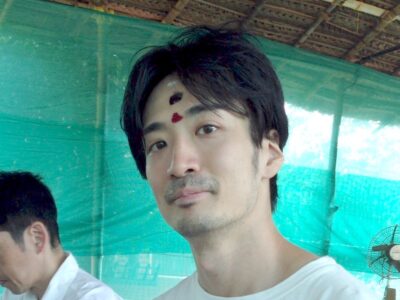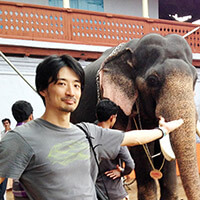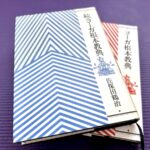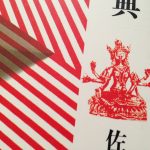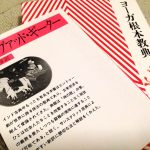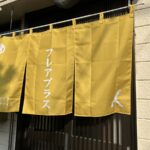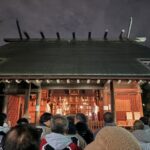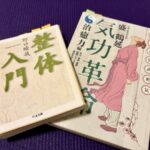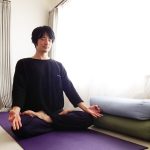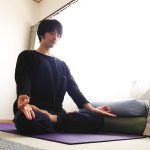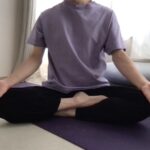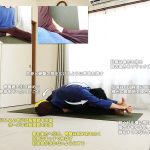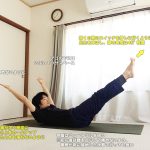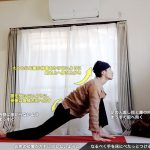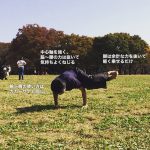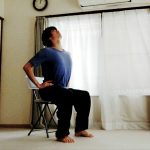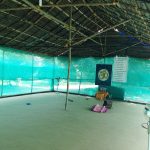「クンダリニー・タントラ/スワミ・サティヤナンダ・サラスワティ著」を読み進めていく形で、クンダリーニヨガ(クンダリニーヨーガ)の概要を紹介していく連載記事です。
「Kundalini Tantra 英語版 ペーパーバック」 Swami Satyananda Saraswati (著)
「Kundalini Tantra 英語版 Kindle」 Swami Satyananda Saraswati (著)
今回は、第2章の3節、「第三の目(サードアイ)」とも呼ばれるアージュニャーチャクラの位置や特徴に関する部分です。
「アージュニャー」という名称について少し書いておくと、आज्ञा ājñā というサンスクリット語は日本語にはない発音なので、カタカナ表記にも「アジュニャー」「アジナー」「アジナ」など様々なバリエーションがあります。本山博氏は「アジナチャクラ」と表記していたようです。最初と最後のaは伸びる音で、発音としては「アーンニャー」に近いと思います。
以下、引用部分の太字強調は私が個人的に重要と思ったところを示したものです。
この記事の目次
最初に覚醒に取り掛かるチャクラは、ムーラーダーラかアージュニャーか
Our reflection on the psychic centers begins from ajna chakra. According to tradition, mooladhara is generally designated as the first chakra since it is the seat of kundalini shakti. However, there is another system in which consideration and study of the chakras commences from ajna.
チャクラに関する行法の始め方として、クンダリニーの座であり第1チャクラであるムーラーダーラから始めるように作られているものが多いですが、第6チャクラのアージュニャーから始めるように作られたものもあります。
サティヤナンダ氏は、アージュニャーから始めるシステムを採用しているようです。その理由がここから説明されていきます。
Ajna chakra is the point of confluence where the three main nadis or forces – ida, pingala and sushumna merge into one stream of consciousness and flow up to sahasrara, the crown center.
アージュニャーは、イダー・ピンガラー・スシュムナー3本のナディが合流し、その上のサハスラーラへ流れ至るための合流点となります。
When the mind is concentrated at this conjunction, transformation of individual consciousness is brought about by the merging of the three great forces. Individual consciousness is mainly comprised of ego, and it is on account of ego that we are aware of dualities. As long as there is duality there cannot be samadhi; as long as you remember yourself you cannot get out of yourself.
心がこの合流点に集中し、3つの流れがひとつになることで、個人の意識は大きく変容するといわれます。
二元性がある限りサマーディに至ることはできず、エゴがあるかぎり二元性は存在し続けます。
Although there are experiences of trance in other chakras, there is no merger of the individual ego with the cosmic ego. All throughout you find you are trying to assert yourself behind all the experiences you are having, but when ida and pingala unite with sushumna in ajna chakra, you lose yourself completely. I don’t mean that you become unconscious. Your awareness expands and becomes homogeneous. Then individual awareness falls flat and you completely transcend the realm of duality. Thus ajna chakra is a very important center, which you must experience in order to bring about purification of the mind. Once the mind is purified the experience and awakening of the other chakras can proceed.
There is a certain problem with the awakening of the other chakras. Each one contains a store of karmas or samskara, both good and bad, positive and negative, painful and pleasant. The awakening of any chakra will definitely bring to the surface an explosion or expression of these karmas, and of course, not everybody is prepared or ready to face them. Only those who have reason and understanding are able to cope. Therefore it is said that before you start awakening and manifesting the great force, it is best to purify the mind at the point of confluence. Then, with a purified mind, you can awaken the other chakras. For this reason we begin our exposition of the chakras with ajna.
アージュニャーにおいて3つのナディが合流することによって、エゴが消え去り、エゴの中に限定されていた意識は世界の全てへと均質に広がっていくといいます。それによって心は浄化され、他のチャクラの覚醒を始めていく準備が整うということのようです。
また各チャクラはそれぞれ、過去世から今までに積み重なったカルマやサンスカーラ(業・印象)を持っており、チャクラの覚醒によってそれらが発現し、良いことか悪いことかに関わらず爆発的・衝撃的な出来事が起こることがあります。
それに対してほとんどの人は準備ができていないため、各チャクラの覚醒の前に心を浄化しておく必要があり、まずはアージュニャーを先に覚醒させるべきであると説明されています。
司令塔・直感(第三の目)の役割を担うアージュニャーチャクラ
The word ajna comes from the Sanskrit root which means ‘to know, to obey or to follow’. Literally, ajna means ‘command’ or ‘the monitoring center’.
「आज्ञा ājñā アージュニャー」という言葉は、「知る」「従う」といった語源から来ていて、その意味は「司令塔」「監視塔」といったものです。
Ajna is the bridge which links the guru with his disciples. It represents the level at which it is possible for direct mind to mind communication to take place between two people. It is in this chakra that communication with the external guru, the teacher or preceptor takes place. And it is here that the directions of the inner guru are heard in the deepest state of meditation, when all the sense modalities are withdrawn and one enters the state of shoonya or void.
アージュニャーは師匠と弟子をつなぐ橋渡しともなるものであり、アージュニャーが覚醒することによって、心と心でダイレクトにコミュニケーションできるようになるといいます。
これは言葉で伝わるというよりは、より直接的な、直観的な形で伝わるイメージです。言葉を使うとブレてしまうような智慧は、そのように伝わったほうが確実です。
それは外にいる人としての師匠との場合も可能であるし、深い瞑想の中で内側にいる師匠からの声を聞くということにもつながります。
It has also been called ‘the eye of intuition’, and it is the doorway through which the individual enters the astral and psychic dimension of consciousness. Perhaps the most common name for this chakra is ‘the third eye‘, and the mystical traditions of every age and culture make abundant references to it. It is portrayed as a psychic eye located midway between the two physical eyes and it looks inward instead of outward.
師匠からの指導がテレパシーのようにダイレクトに得られるといったことや、アストラルやメンタル次元の意識の入り口ともなり高次元の気づきが得られるようになっていくことから、アージュニャーチャクラは「直観の眼」「第三の眼」「シヴァの眼」など様々な別名がつけられ、歴史上でも多くの文化において言及されてきました。
この眼は、物理的な2つの眼の間にあり、体表にでているわけではなく内側のほうにあるといわれます。
It is interesting to note that ajna chakra is more active in females than it is in males. Women are more sensitive, psychic and perceptive and they are often able to predict coming events. However, in most people this inner eye remains closed, and though they see the events of the outside world, knowledge and understanding of truth cannot be gained. In this sense, we are blind to the real possibilities of the world, unable to view the deeper levels of human existence.
アージュニャーチャクラは、男性よりも女性の方がより活発に働くといいます。そのため女性はより繊細な感覚を持っていて、超常的なことにも気づきやすく感受性が高く、予知能力も鋭いようです。
しかしほとんどの人にとってこの内側の眼は閉じていて、真理を観ることはできていません。
アージュニャーチャクラの位置
Ajna chakra is located in the brain directly behind the eyebrow center. It is at the very top of the spinal cord, at the medulla oblongata. Initially it is very hard to feel the exact location point of ajna, so we concentrate on ajna kshetram, at the mid-eyebrow center, bhrumadhya. These two centers are directly connected. That is why it has always been an Indian custom to place tilaka, chandan, sindur or kumkum on the mid-eyebrow center. Sindur contains mercury, and when it is applied to the eyebrow center a constant pressure is exerted on the nerve which runs from bhrumadhya to the medulla oblongata. Maybe the original purpose for applying these substances has been forgotten by most people today, but it is not a religious mark or even a beauty spot. It is a means by which you can maintain constant conscious and unconscious awareness of ajna chakra.
アージュニャーチャクラは、眉間の後ろ、脳の中、脊椎の一番上(延髄)にあると説明されています。
脳の中にあり、その位置へ正確に意識を集中することは難しいため、クシェートラム(チャクラの代わりに集中する体表の点)である眉間(ブルーマディヤ)へ集中する行法を用いることが多いです。
眉間とアージュニャーチャクラは、ダイレクトにつながっているといいます。インドでは眉間に白檀のペーストなどを塗る習慣があります。これは宗教的な意味のあるものでもなく、オシャレのためでもなく、アージュニャーチャクラに対して意識的・無意識的に気づきを向けるための印であるといいます。
私もインドで最初と最後の儀式のときに塗られました。眉間と、額の真ん中にも塗っていますね。
It should also be mentioned here that ajna chakra and the pineal gland are one and the same thing. The pituitary gland is sahasrara, and just as the pituitary and pineal glands are intimately connected, so are ajna and sahasrara. We could say that ajna is the gateway to sahasrara chakra. If ajna is awakened and functioning properly, all the experiences happening in sahasrara can be managed well.
The pineal gland acts as a lock on the pituitary. As long as the pineal gland is healthy, the functions of the pituitary are controlled. However, in most of us, the pineal gland started to degenerate when we reached the age of 8, 9 or 10. Then the pituitary began to function and to secrete various hormones which instigated our sexual consciousness, our sensuality and worldly personality. At this time we began to lose touch with our spiritual heritage. However, through various yogic techniques, such as trataka and shambhavi mudra, it is possible to regenerate or maintain the health of the pineal gland.
アージュニャーチャクラと松果腺が対応関係にあると言及されることがよくあります。ここではまさにそれらはひとつのものである、とも書かれています。
また、脳下垂体はサハスラーラと対応しているといわれ、これらは肉体的にも直接繋がっており、チャクラとしてもアージュニャーはサハスラーラへの入り口として機能するといわれます。
この対応関係は、文献によっては逆になっていることもあるようです。
松果腺が適切に機能していれば脳下垂体も正常に機能するといいます。これらは体を維持するために重要なホルモンをコントロールしていることは医学的にも知られています。
松果腺は脳下垂体をコントロールする鍵としても機能するといいますが、8〜10歳くらいから徐々に機能しなくなっていき、それによって脳下垂体は、性的な意識など俗世的な性質を発現させるホルモンを分泌し始めるといいます。
しかし、トラータカやシャーンバヴィームドラのようなヨーガの技術を用いることによって、松果腺を再び機能させることができるようになると説明されています。
トラータカはロウソクの炎などを長時間じっと見つめる行法で、シャーンバヴィームドラーは両目で眉間を凝視する行法です。後の章でアージュニャーチャクラの覚醒の行法として詳しく説明されています。
アージュニャーチャクラを表す伝統的なシンボル
Ajna is symbolized by a two petalled lotus. According to the scriptures it is a pale color, light grey like a rainy day. Some say it is white like the moon, or silver, but actually it is an intangible color. On the left petal is the letter ham and on the right ksham. Ham and ksham are inscribed in a silvery white color and are the bija mantras for Shiva and Shakti. One represents the moon or ida nadi and the other the sun or pingala nadi. Below the chakra the three nadis merge – ida on the left, pingala on the right and sushumna in between.
アージュニャーチャクラは、二枚の花弁を持つ蓮華をシンボルとして表されることが多いです。
ここには図は載っていないのですが、「Ajna Symbol」などで画像検索すると見つかると思います。ただ、以下に書かれているようにシヴァリンガム(男根のような形のシンボル)が含まれているというのが、一見よくわかりません。
ある文献によればその色は、雨の日のような青白く明るいグレーで表されるといいます。またある人は月のように白や銀色に輝いているということもありますが、その色は実際には感じ取ることのできない色であるといわれます。
左の花弁はイダー(月)、右の花弁はピンガラー(太陽)を表し、それぞれにHam・Kshamのビージャマントラが記され、真ん中にスシュムナーが通ることを表現しています。
Within the lotus is a perfectly round circle which symbolizes shoonya, the void. Within the circle is an inverted triangle which represents shakti – creativity and manifestation. Above the triangle is a black shivalingam. Shivalingam is not, as many people believe, a phallic symbol. It is the symbol of your astral body. According to tantra and occult sciences, the astral body is the attribute of your personality, and in the form of shivalingam, it can be one of three colors, depending on the purification or evolution of your consciousness.
蓮華の真ん中にある真円は「空(虚空)」を表していて、その中にある逆三角形がシャクティ(創造する力)を表しているといいます。
逆三角形の上には黒いシヴァリンガムがあり、これはよく男根を象徴するといわれますが、そうではなくこれはアストラル体を表していると説明されています。アストラル体はその人の人格を表現し、シヴァリンガムの色はその人の意識の浄化・進化の度合いを表しているといいます。
ただ、一見するとどこにシヴァリンガムが描かれているのかわかりにくく、それについて言及している人も少ないようです。
Over the shivalingam is the traditional symbol of Оm, with its tail on top and the crescent moon and bindu above that. Om is the bija mantra and symbol of ajna chakra, and above its form can be seen the raif, the trace of sound consciousness.
シンボルの絵をみるとたしかに真ん中にॐ(Om)の梵字がありますが、「シヴァリンガムの上にOmが乗っている」と説明されているので、おそらくこのシンボルは三次元的に描かれており、虚空を示す円の上に、シヴァリンガムが立っているように描かれているのかと思います。あまりそこに言及している人がいないようなので、ここに関しては研究が必要かもしれません。
Omはアージュニャーチャクラのビージャマントラであり、非常によく用いられる重要な音です。ヨガスタジオでも唱えているところは多いでしょう。
用語:ビージャ(ビジャ) bīja
用語:オーム om
Each chakra is considered to possess a tanmatra, or specific sense of modality, a gyanendriya or organ of sense perception, and a karmendriya or organ of action. The tanmatra, gyanendriya and karmendriya of ajna chakra are all considered to be the mind. The mind is able to gain knowledge by subtle means rather than by the input of sense data from the various sense organs, which are the gyanendriyas of the other chakras. The mind perceives knowledge directly via a sixth or intuitive sense, which comes into operation as ajna chakra awakens. This sense is the gyanendriya of the mind. Similarly, the mind can manifest actively without the aid of the physical body. This is the faculty of astral projection, which manifests with the awakening of ajna chakra. Therefore, mind is considered to be the karmendriya of ajna. The mode of operation of this center is purely mental and so the tanmatra is also the mind. The plane is tapa loka, where vestiges of imperfection are purified and the karmas are burned away. Along with vishuddhi chakra, ajna forms the basis for vigyanamaya kosha, which initiates psychic development.
各チャクラはそれぞれ特定の感覚(タンマートラ)を管理する役割を担っており、それぞれに対応する肉体上の感覚器官(ギャネンドリヤ)や、筋肉などの行動器官(カルメンドリヤ)があるといいます。たとえば、「触覚」を得るために→「肌」を介して→「腕」や「手」によって行動して触る、といった関係性です。
しかしアージュニャーチャクラが管理する分野では、それらはすべて「心」によって起こることであり、「心」が知覚するために用いるのは目や耳のような肉体器官ではなく、「第六感」あるいは「直観」であり、それはアージュニャーチャクラの覚醒によって機能させることができるようになると説明されています。このあたりが、「第三の眼」や「直観の眼」と呼ばれる理由でしょう。
また「心」は肉体を用いずして「行為を行う」こともでき(夢がその一例)、それはアストラル・プロジェクション(幽体離脱と言われるものもその一部)の能力として、アージュニャーチャクラの覚醒によって現れるといいます。
Often, the experience one has when awakening takes place in ajna is similar to that induced by ganja (marijuana) or any other drug of that type. He who meditates on this awakened chakra sees a flaming lamp shining as the morning sun and he dwells within the regions of fire, sun and moon. He is able to enter another’s body at will, and becomes the most excellent amongst munis, being all-knowing and all-seeing. He becomes the benefactor of all and is versed in all the shastras. He realizes his unity with the Brahman and acquires siddhis. Different results accruing out of meditation on the various centers are collectively realized by meditating on this center alone.
アージュニャーチャクラが覚醒すると、他人の体に入ったり、全てを知り、全てを観ることができるなど、シッディ(超能力)を得るということが述べられています。ただし、心の準備が整うまではグランティが遮っている(後述)など、シッディが現れるためには条件があるようです。
また、先ほど述べられたように「心」を使って「感覚」や「行動」を行うことができるため、他の全てのチャクラで得られる経験を、アージュニャーチャクラに瞑想することで得られるともいわれています。
このようにアージュニャーチャクラは、チャクラの中でも非常に特別なものとして扱われています。
アージュニャーチャクラの役割と心の関係
So, ajna is essentially the chakra of the mind, representing a higher level of awareness. Whenever you concentrate on something, whether it is mooladhara, swadhisthana or manipura chakra, or you concentrate on an external object or an idea, ajna is affected, sometimes mildly, sometimes powerfully, depending on the degree of your concentration. When we visualize or when we dream at night, the inner vision that occurs is through ajna. If you are eating, sleeping or talking and you are not aware of it, then ajna is not operating. But if you are talking and one area of your awareness knows it, this knowing, this awareness is the faculty of ajna.
アージュニャーチャクラは、心に関係する重要なチャクラであり、高いレベルの気づきを導くものであるといいます。
何かに集中する時、それがどのチャクラでも、なにか別の集中対象でも、集中の度合いによって必ずアージュニャーチャクラの影響を受けるといいます。
これが本当であれば、集中・瞑想やマインドフルネスの実践をする際の効果は、アージュニャーチャクラが大きく関わっているということでしょう。
何かを視覚化したり、夢をみたりするときなど、内的ビジョンを観るときはアージュニャーチャクラを通じてそれが起こります。また、食べたり話したりする日常的な行為において、それに気づきを働かせていればアージュニャーチャクラは機能していますが、気づきを伴っていない場合はアージュニャーチャクラが機能していないということになる、と説明されています。
When you develop ajna, you can have knowledge without the aid of the senses. Normally, all knowledge comes to us by means of information the senses conduct to the brain, and a process of classification, logic and intellect that takes place in the frontal brain. However, the smaller brain, where ajna chakra is situated, has the capacity to acquire knowledge directly without the aid of the indriyas or senses. Supposing it is a very cloudy day, you can know, through logic, that it will rain. But if there are no clouds in the sky and still you know beyond a doubt that it will rain, this means your intuition and perception are very acute and ajna chakra is functioning.
前の項で述べられたように、アージュニャーチャクラは感覚器官を経ずして直接的に知を得ることができるといいます。
通常は、前頭葉に関係する論理や理解力を用いて、感覚器官から得られる情報を処理して知識を得ていますが、アージュニャーチャクラの位置する小脳は、そのような過程を経ずに知識を得ることができるようです。
たとえば、空がどんより曇っているという視覚情報があれば、これから雨が降るという知識を得ることができますが、もし雲という情報がなかったとしても、これから雨が降るということが直感的にわかる、これがアージュニャーチャクラが機能しているということである、というように説明されています。
When ajna is awakened, fickleness of the individual mind disperses and the purified buddhi (subtle intelligence or higher perception) manifests. Attachment, which is the cause of ignorance and lack of discrimination drops away, and sankalpa shakti (willpower) becomes very strong. Mental resolves are almost immediately converted into fruits, provided they are in accordance with individual dharma.
アージュニャーチャクラが目覚めていると、移り気な心は消え去り、浄化されたブッディ(微細な智・高次の知覚)が現れるといいます。様々な雑念・無知の原因となる執着はなくなり、サンカルパ・シャクティ(意志の力)が強まるといいます。心で決意したことはすぐに結果をもたらし、それは個人の生まれ持ったダルマ(義務・美徳)に合致したものになっていきます。
「サンカルパ」は、「◯◯を成し遂げよう」といった意志を表し、目標を毎日書いたりする実践をヨーガの合宿などで行ったりする際にもこの言葉がよく用いられます。
「ダルマ」は多くの意味を持つ言葉で、生まれ持った義務などを表し、ダルマに沿った生き方をし、ダルマに沿わない生き方(アダルマ)を避けよ、というような用いられ方をします。つまりはそもそも、自分のダルマに気づいていなくてはなりません。そういった高次元の気づきも、アージュニャーチャクラが関係しているということのようです。
Ajna is the witnessing center where one becomes the detached observer of all events, including those within the body and mind. Here the level of awareness is developed whereby one begins to ‘see’ the hidden essence underlying all visible appearances. When ajna is awakened, the meaning and significance of symbols flashes into one’s conscious perception and intuitive knowledge arises effortlessly.
アージュニャーは「観察者」の意識のセンターであり、心や体で起こる物事に巻き込まれず、離れたところから冷静に観ることができ、「見えるもの」の裏側にある本質を観るための高いレベルの気づきを培うために重要なチャクラとなります。
アージュニャーが覚醒していると、様々な「シンボル」に隠された意味が直接的に知覚され、直感的な智慧が自然に湧き出てくるといいます。
チャクラなど秘教的な教えには、蓮華や生命の樹や幾何学図形(ヤントラ)といった「シンボル」がよく用いられます。
分からない人にとっては、なぜこんなシンボルが重要として扱われているのか?と感じられることでしょう。
シンボルが用いられたのは、知られると弾圧されてしまったりする宗教的なことや、気づきの度合いが高くない人が知るべきではないことなど、何らかの理由で秘密にしなくてはならないことが、伝わるべき人にだけ伝えられるためといわれます。
This is the center of extrasensory perception where various siddhis manifest according to one’s samskaras or mental tendencies. For this reason, ajna chakra is said to resemble a knot directly on top of the spinal cord. According to tantra this knot is called rudra granthi, the knot of Shiva. This knot is symbolic of the aspirant’s attachment to the newly developed siddhis which accompany the awakening of ajna. The knot effectively blocks the spiritual evolution until attachment to psychic phenomena is overcome and the knot in consciousness is freed.
アージュニャーチャクラは、個人のサンスカーラ(運命などを決める力)や心の傾向に応じた様々なシッディ(超能力)が現れるきっかけとなる超常的な知覚をもたらすセンターですが、そこには前章で述べられた「グランティ(結び目)」の一つルドラ・グランティがあり、そういった超常的なものに対する執着を乗り越えてからではなくては超能力が現れてこないように、進化をうまく妨げる役割を果たしているといいます。
Cause and effect are not immediate events. Each and every action is both a cause and an effect. This life we have is an effect, but what was the cause? You have to discover it, then you can understand the relationship between cause and effect. It is only after awakening of ajna chakra that these laws can be known. Thereafter your whole philosophical attitude and approach to life changes. No events of life affect you adversely, and the various objects and experiences that come into your life and fade out of your life do not disturb you at all. You participate in all the affairs of life and you live fully, but as a detached witness. Life flows like a fast current and you surrender and move with it.
物事には必ず因果関係があり、アージュニャーチャクラの覚醒によってその全てに気づくことができるといいます。
自分が肉体を持って生まれた原因にも気づくことができ、本当の自分は「観察者」であって、この物質世界で起こることは全て経験であり本当の自分を悩ませるものではない、といったことに気づくことで、人生の送り方が大きく変わるきっかけとなると説明されています。
アージュニャーチャクラからサハスラーラへ
To reach ajna chakra it requires sadhana, discipline, firm belief and persistent effort. With our present state of mind it is not possible to know how to reach sahasrara, but once ajna chakra becomes active, you develop superior perception and you realize how sahasrara can be reached. It’s like setting out on a journey from Munger to Marine Drive, Bombay. The most important stage of the journey is the long train trip to Bombay. Once you are there, reaching Marine Drive is no problem. It’s easy to find the way, you just take a taxi and go there. So, in my opinion, it is not important for us to know how to reach sahasrara from ajna chakra, but it is essential for us to know how to awaken ajna.
アージュニャーチャクラを覚醒させるためには、実践・規範・信念・忍耐強い努力が必要であるといいます。
通常の心の状態では、サハスラーラへ至るには具体的にどうしたらいいかを知ることはできませんが、アージュニャーチャクラが活性化することによって超常的な知覚を得られ、サハスラーラへ至る道に気づくことができるといわれます。
そのため、サティヤナンダ氏の主張としては、サハスラーラへの道を知ろうとするよりも、アージュニャーチャクラの覚醒の道をまず学ぶべきであろう、と述べられています。
この節では、「第6チャクラ」なのになぜ最初にアージュニャーチャクラに取り掛かるのかという理由が、詳しく説明されてきました。アージュニャーチャクラの覚醒に関する具体的な行法に関しては、シャーンバヴィームドラーなどの名前だけはいくつか出てきましたが、詳細は第3章で示されていきます。
次記事:「クンダリニー・タントラ」を読む【31】第2章 4節:ムーラーダーラチャクラ
前記事:「クンダリニー・タントラ」を読む【29】第2章 2節:チャクラを通じた進化
参考文献
「Kundalini Tantra 英語版 ペーパーバック」 Swami Satyananda Saraswati (著)
「Kundalini Tantra 英語版 Kindle」 Swami Satyananda Saraswati (著)
「クンダリニー」ゴーピ・クリシュナ (著), 中島巌 (翻訳)
「Asana Pranayama Mudra Bandha 英語版」Swami Satyananda Saraswati (著)

